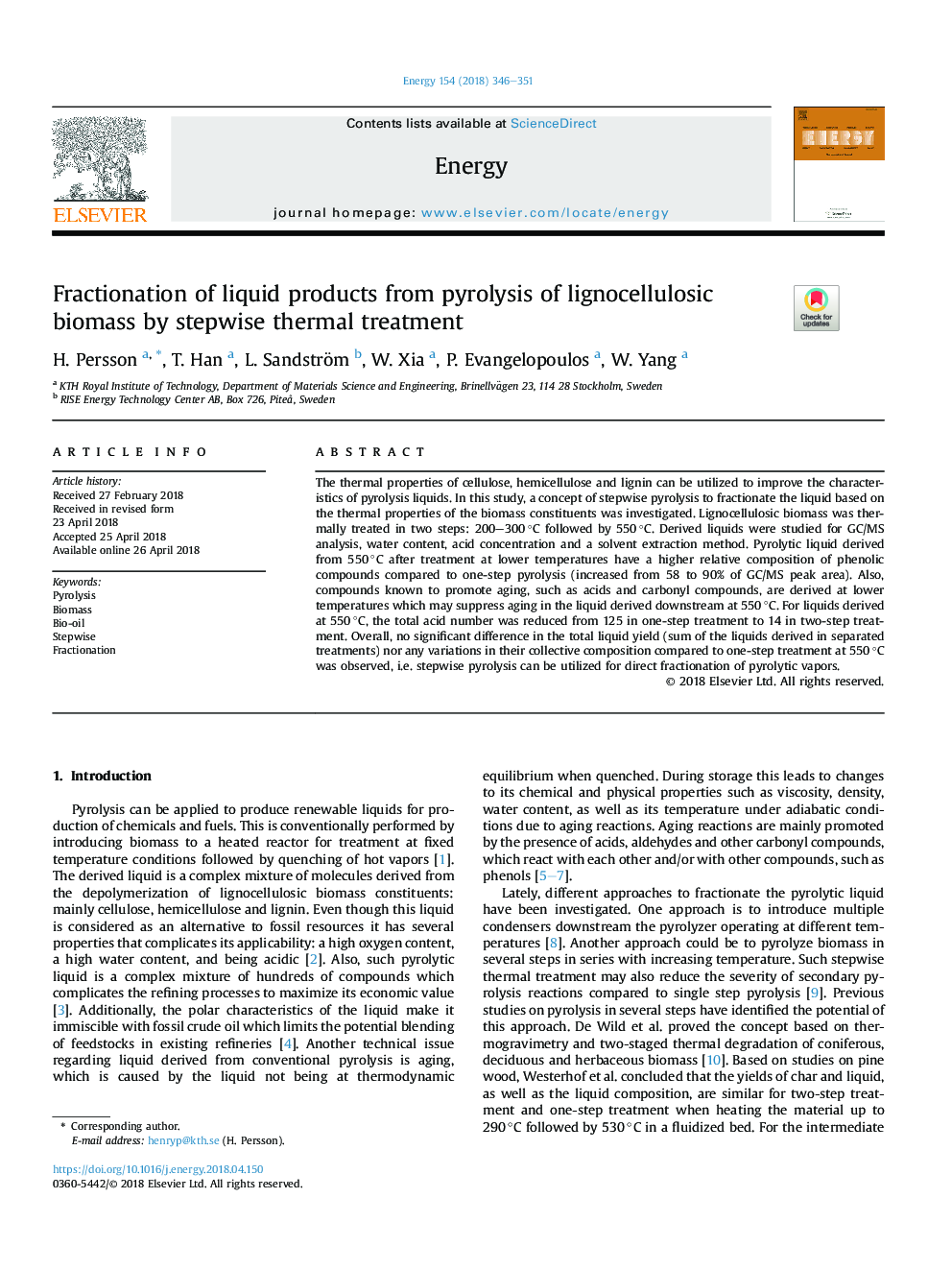| Article ID | Journal | Published Year | Pages | File Type |
|---|---|---|---|---|
| 8071463 | Energy | 2018 | 6 Pages |
Abstract
The thermal properties of cellulose, hemicellulose and lignin can be utilized to improve the characteristics of pyrolysis liquids. In this study, a concept of stepwise pyrolysis to fractionate the liquid based on the thermal properties of the biomass constituents was investigated. Lignocellulosic biomass was thermally treated in two steps: 200-300â¯Â°C followed by 550â¯Â°C. Derived liquids were studied for GC/MS analysis, water content, acid concentration and a solvent extraction method. Pyrolytic liquid derived from 550â¯Â°C after treatment at lower temperatures have a higher relative composition of phenolic compounds compared to one-step pyrolysis (increased from 58 to 90% of GC/MS peak area). Also, compounds known to promote aging, such as acids and carbonyl compounds, are derived at lower temperatures which may suppress aging in the liquid derived downstream at 550â¯Â°C. For liquids derived at 550â¯Â°C, the total acid number was reduced from 125 in one-step treatment to 14 in two-step treatment. Overall, no significant difference in the total liquid yield (sum of the liquids derived in separated treatments) nor any variations in their collective composition compared to one-step treatment at 550â¯Â°C was observed, i.e. stepwise pyrolysis can be utilized for direct fractionation of pyrolytic vapors.
Related Topics
Physical Sciences and Engineering
Energy
Energy (General)
Authors
H. Persson, T. Han, L. Sandström, W. Xia, P. Evangelopoulos, W. Yang,
